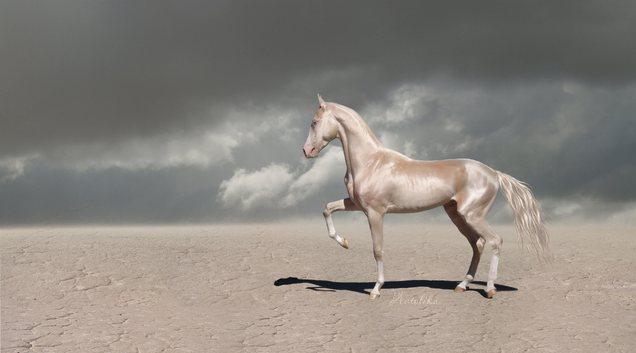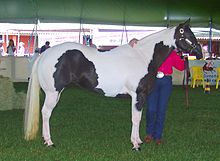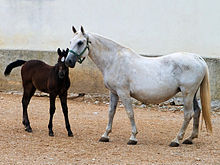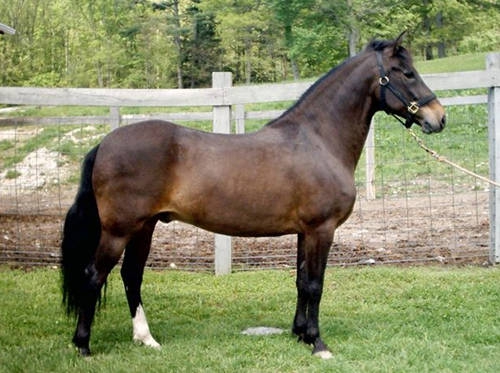medium in length
American curly horse
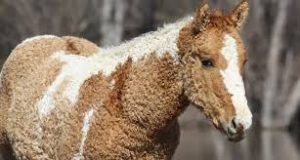 Folk selection
Folk selection
Enterprising farmers decided to cross caught mustangs with their own horses. Soon this initiative was supported by their neighbors. So in the selection process was attended not only the horse Morgan, a breed popular in those days, but even purebred Arabian horses.
Officially, the new breed was registered in 1971 under the name American Bashkir Curly Horse (American Curly Bashkir).
Currently, it allows many varieties. Only the presence of curly wavy hair is common.
American Curly Horse Photo
It has been documented that similar horses were among the Sioux and Crow Indians at the beginning of the 19th century. Presumably, they came to them from Russian settlers who allegedly brought Transbaikal curly horses (Bashkirs) to the American continent. Continue reading
Hannover horse
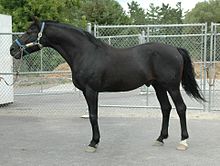 About the breed
About the breed
Nowadays, the Hanover half-breed is the most popular sports breed in the world. She can be seen at most international show jumping and dressage competitions. This is the result of German scrupulousness: the Hanover breed was carefully created for about 300 years – for various, but specific purposes. This breed was bred from an ugly livestock, improved by crossing with suitable thoroughbred riding, Arab and Trakenen horses.
Breed characteristics
Hanoverian horses have an almost perfect exterior, in which the traits of the English thoroughbred are clearly traced. Head of medium size, with a straight profile; look alive. Continue reading
OSSETIAN ROCK HORSE (part 3)
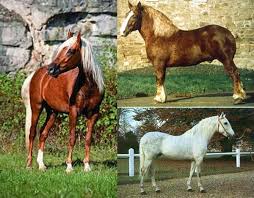 Archaeological material belonging to the Scythian period reflects close contacts between Iranian-speaking nomads and Caucasian tribes. Particularly intense interaction took place in the Central Caucasus. Under the influence of the ancient Iranians, local tribes underwent changes in military affairs. They began to use cavalry in the war, especially in the 7th-6th centuries. BC, during the stay in the open spaces of the North Caucasus Scythians. From time to time, their numerous equestrian squads made successful campaigns from here to the countries of the Near East. During this period, cavalry became the dominant branch of the Caucasian tribes. Together with equestrian battle tactics, Caucasian tribes adopt the horse itself from the Scythians. Part of the Scythians, and in the VI-V centuries. BC. and savromatov, mixed with cobans who lived in the foothills. The presence of nomadic burials in the mountainous regions of the Central Caucasus dating back to the 7th-6th centuries. Continue reading
Archaeological material belonging to the Scythian period reflects close contacts between Iranian-speaking nomads and Caucasian tribes. Particularly intense interaction took place in the Central Caucasus. Under the influence of the ancient Iranians, local tribes underwent changes in military affairs. They began to use cavalry in the war, especially in the 7th-6th centuries. BC, during the stay in the open spaces of the North Caucasus Scythians. From time to time, their numerous equestrian squads made successful campaigns from here to the countries of the Near East. During this period, cavalry became the dominant branch of the Caucasian tribes. Together with equestrian battle tactics, Caucasian tribes adopt the horse itself from the Scythians. Part of the Scythians, and in the VI-V centuries. BC. and savromatov, mixed with cobans who lived in the foothills. The presence of nomadic burials in the mountainous regions of the Central Caucasus dating back to the 7th-6th centuries. Continue reading

